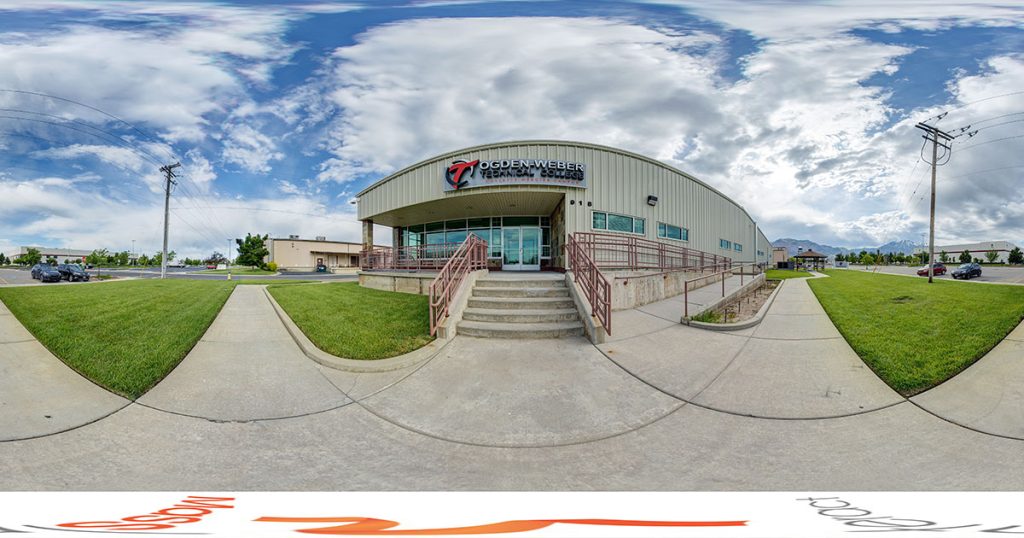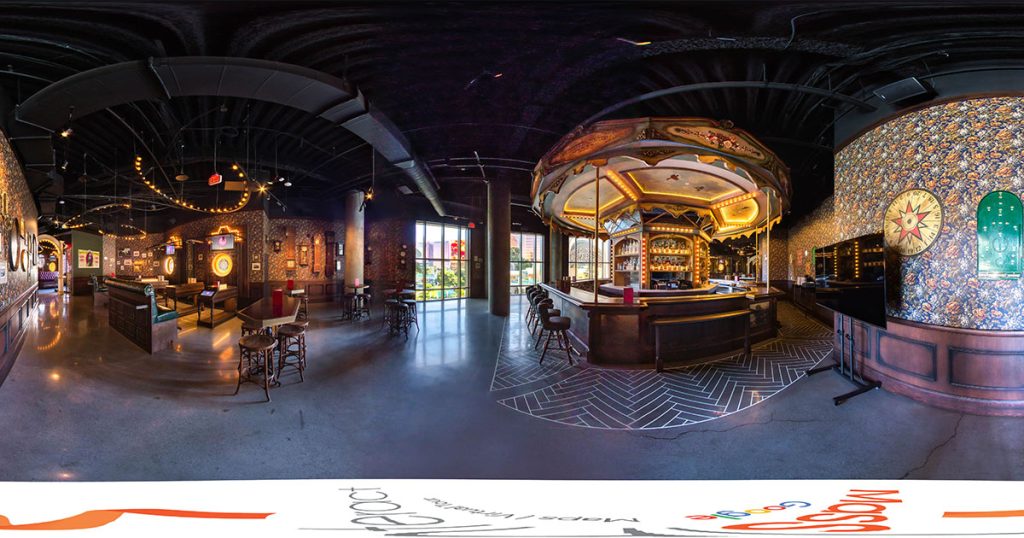As technology continues to evolve, so do the ways in which prospective students can explore college campuses. Virtual tours and video tours have emerged as game-changing tools in the realm of campus exploration, redefining how students get a feel for their prospective schools without leaving their homes. These immersive experiences provide a comprehensive view of campus life and facilities, helping students make informed decisions about their college choices. But how do these two methods stack up against each other? While both tours provide a way to experience the campus remotely, they differ starkly. In this article, we will delve into the differences between virtual tours vs. video tours, weigh their pros and cons, and discuss which option best suits providing an immersive college tour experience.
What are Virtual Tours?
In the digital era, the process of college campus exploration has transformed dramatically. One significant development has been the advent of virtual tours. These cutting-edge tools offer prospective students a comprehensive and immersive view of a college campus without leaving the comfort of their homes. But what is the main purpose of a virtual tour? Essentially, it serves to provide an interactive and engaging experience that allows students to ‘walk through’ a college campus digitally, thereby making informed decisions about their prospective colleges.
Leveraging advanced technology such as 360-degree cameras or virtual reality (VR) devices, virtual tours create a simulated environment replicating a physical campus visit.
What Are Video Tours?
Video tours, on the other hand, entail a recorded walkthrough of the college campus, providing a visual representation of the various facilities, buildings, academic departments, and the overall campus life. They are typically filmed by college staff or professional videographers and shared via college websites, social media, or admissions portals. As we navigate through the futuristic landscape of college admissions, let’s delve deeper into the dynamics of virtual tours vs. video tours and their transformative impact on college campus exploration.
Difference Between Video Tours and Virtual Tours
While both video tours and virtual tours serve the purpose of showcasing college campuses remotely, there are significant differences between the two:
Immersion and Interactivity
Virtual tours offer a higher level of immersion and interactivity compared to video tours. With 360-degree virtual tours, prospective students can explore the campus at their own pace, navigate through different buildings, walk along pathways, and interact with virtual elements. On the other hand, video tours provide a passive viewing experience, where viewers rely on the guide to showcase the campus features.
Realism and Detail
Virtual tours provide a more realistic representation of a college campus, thanks to 360-degree cameras or VR technology. Users can experience the campus environment from different angles, view facilities up close, and better understand the overall atmosphere. Video tours, while informative, may not capture the campus ambiance and finer details to the same extent.
Accessibility and Convenience
Video tours are generally easier to produce and share compared to virtual tours. With video tours, colleges can record a walkthrough with standard recording equipment, making them accessible to a broader audience. Contrarily, virtual tours necessitate specialized hardware and software, which may restrict their availability to colleges. However, with emerging virtual tour services, virtual tours are becoming more accessible every day.
Virtual Tours vs. Video Tours: How to Decide Which is Best
When choosing virtual tours or video tours for showcasing your college, carefully evaluating your specific needs and objectives is essential. Here are some additional points to consider to make an informed decision:
Desired Level of Interactivity
Virtual tours offer a higher level of interactivity compared to video tours. Suppose you want to provide prospective students with a hands-on, immersive experience where they can navigate through the campus, explore facilities, and interact with virtual elements. In that case, virtual tours are the ideal choice. On the other hand, if you want to provide a simple visual walkthrough of the campus without the need for user interaction, video tours can still effectively showcase the college’s features.
Budget and Resource Allocation
Evaluate your budget and available resources. Virtual tours require a higher upfront investment due to the specialized equipment and software involved. Consider whether your budget can accommodate the costs of creating and maintaining virtual tours, including training or hiring professionals to handle the production. If you have limited resources, video tours can be a more cost-effective option, allowing you to showcase your college effectively.
Time Constraints and Production Process
Consider the time it takes to produce virtual tours versus video tours. Virtual tours typically require more time and effort due to the complexities of capturing 360-degree images, post-processing, and creating interactive elements. If you have a tight timeline or need to showcase your college quickly, video tours can be produced more efficiently and with a shorter turnaround time.
Target Audience Preferences
Consider the preferences and characteristics of your target audience. Research shows that younger generations, like Gen Z, are more technologically inclined and enjoy interactive experiences. Virtual tours align better with their preferences if your target audience consists primarily of tech-savvy prospective students.
Marketing Goals and Differentiation
Think about your overall marketing strategy and goals. Virtual tours can provide a unique selling point and differentiate your college from competitors. Virtual tours’ immersive and interactive nature can leave a lasting impression on prospective students, showcasing your commitment to innovation and providing a memorable experience. Conversely, Video tours may be more suitable if your primary goal is to provide a quick and informative overview of the college’s features.
Why You Should Choose Virtual Tours ?
Enhanced Engagement and Experience
Virtual tours offer a highly engaging and interactive experience for prospective students. By immersing them in a virtual environment, virtual tours allow students to explore the college campus at their own pace, navigate different buildings, and interact with virtual elements. This level of engagement helps students envision themselves as part of the college community and creates a lasting impression.
Reach a Global Audience
Virtual tours break down geographical barriers and enable colleges to reach a global audience. Prospective students from anywhere in the world can access virtual tours and explore the campus remotely without having to pay for travel. This expanded reach opens doors to international students and helps colleges attract diverse applicants.
Showcase Facilities and Campus Life
Virtual tours provide an excellent platform for showcasing the college’s facilities, academic departments, dormitories, recreational spaces, and campus life. Prospective students can virtually walk through the library, science labs, student centers, and sports facilities, understanding the college’s resources comprehensively. Additionally, virtual tours can include testimonials or interviews with current students, providing insights into campus culture and community.
Differentiation and Competitive Edge
Virtual tours can give your college a distinct advantage in a competitive landscape. By offering an immersive and cutting-edge experience, you demonstrate your commitment to innovation and adaptability. This can set your college apart and leave a lasting impression on prospective students, positioning you as a forward-thinking institution.
Cost and Time Efficiency
Virtual tours can be a cost-effective solution compared to traditional marketing methods. While there may be an initial investment in equipment and software, virtual tours eliminate the recurring costs of hosting physical campus tours or producing printed materials. Additionally, virtual tours save college staff and prospective students time by providing an accessible and convenient means of exploration.
Adaptability to Remote Learning Trends
The adoption of remote learning and virtual experiences accelerated with the COVID-19 pandemic. By embracing virtual tours, colleges demonstrate their ability to adapt to current trends and offer prospective students a glimpse into the digital learning environment. This shows your commitment to providing a modern and flexible education, which is particularly relevant in today’s evolving educational landscape.
Also Read: Effective Tips for Your College to Recruit Gen Z Students
Conclusion
In the realm of college admissions, virtual tours, and video tours have become powerful tools for showcasing campuses to prospective students. Both options offer unique advantages, depending on the target audience, desired level of interactivity, and available resources. Video tours provide a straightforward and accessible way to showcase the college, while virtual tours offer an immersive and engaging experience. By carefully considering these factors, colleges, and universities can determine which approach best aligns with their goals, ultimately enhancing their recruitment efforts and attracting a diverse pool of applicants. Mass Interact, a leading virtual tour service provider, offers the expertise and cutting-edge technology to create immersive and captivating virtual tours that can transform your college’s online presence and drive student engagement.






















